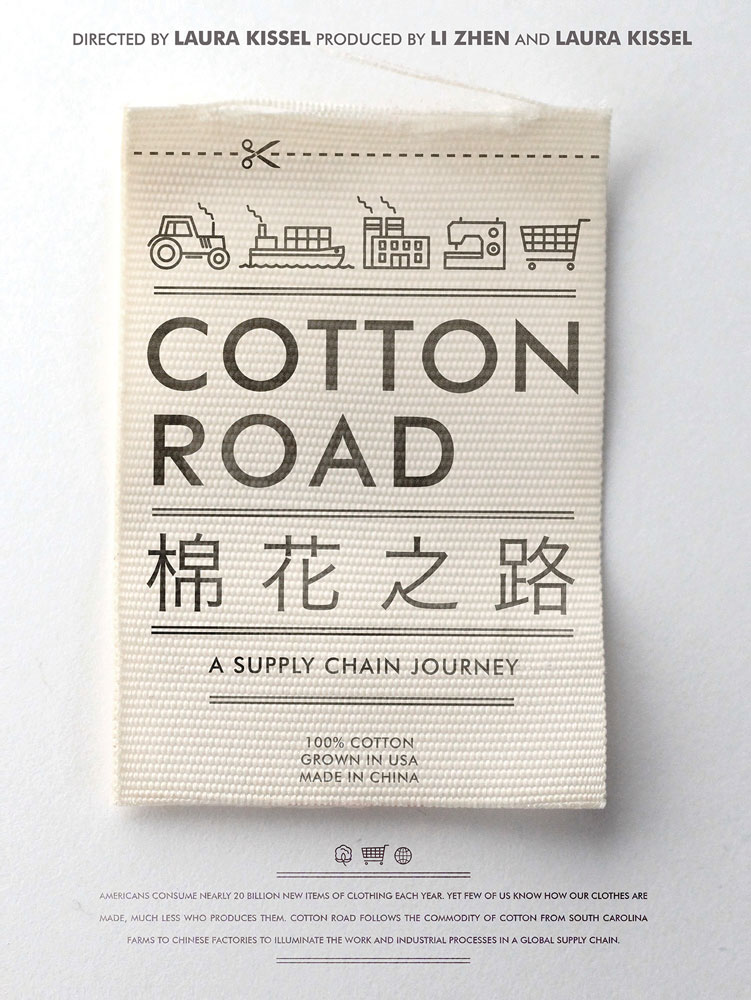 Indie Grits has always put an emphasis on documentaries engaging with thought-provoking social issues, and the 2015 edition is no exception. When Jasper was glancing over the schedule the first time, we quickly noted that two of the films--Every Body Hit Somebody [screening Thursday 4/16 at 7:30 in Nickelodeon Theater 1] and American Cheerleader [screening Friday 4/17 at 6:00 pm in Nickelodeon Theater 2]--explicitly tackle women and athletics, a rich area for exploring gender construction that both films tackle in different ways.
Indie Grits has always put an emphasis on documentaries engaging with thought-provoking social issues, and the 2015 edition is no exception. When Jasper was glancing over the schedule the first time, we quickly noted that two of the films--Every Body Hit Somebody [screening Thursday 4/16 at 7:30 in Nickelodeon Theater 1] and American Cheerleader [screening Friday 4/17 at 6:00 pm in Nickelodeon Theater 2]--explicitly tackle women and athletics, a rich area for exploring gender construction that both films tackle in different ways.
Every Body Hit Somebody, directed by Amanda Berg, is an experimental documentary that follows a women’s football team, the Carolina Phoenix, through the course of a season as it ponders questions of masculinity and femininity that are tied up and constricted in sports in ways that make the team and its league’s existence surprising and confounding. Berg made the film while getting her MFA at Duke University, and its unusual in a variety of ways, most notably in its combining of traditional documentary techniques like extended interviews and live-action with extensive use of still photographs (some of which have been featured on the New York Times Lens Blog) as well as its no-man’s-land run-time of 43 minutes.
American Cheerleader, on the other hand, takes on a more dominant and traditional cultural trope in the cheerleader, but attempts to both humanize the zany pop culture version of the sport typified by films like the Kirsten Dunst-starring Bring It On (2000) and to underline the competitive edge that the sport has. Directors James Pellerito and David Barba were initially skeptical about their subject matter, and that skepticism seems to have served them well in creating a compelling narrative that removes the more sensational aspects of how our culture understands cheerleading.
Jasper decided to shoot the makers of both films a few questions to get a sense of their films--how they came upon these topics, what they found surprising, and how they ultimately grappled with similar subject matter differently. Here’s what they said.
Jasper: What originally drew you to your subject matter? How did you “find your teams”?
James Pellerito (American Cheerleader): David Barba and I were originally approached to direct and produce a documentary about high school cheerleading and we were apprehensive because of the existing stereotypes of cheerleaders. Our only points of reference for the sport were the National High School Cheerleading Championship broadcast on ESPN every year, and the movie Bring It On. We took the project on as a challenge to produce the real Bring It On and break stereotypes about cheerleaders.
Amanda Berg (Every Body Hit Somebody): My own nostalgic football feelings and the desire to tell stories that explore gender boundaries. I researched “women’s tackle football” and found out there was a semi-professional women’s team right in Durham (NC), where I was living. I went to check out one of their pre-season practices and spent the rest of the season documenting.
Jasper: Both of you follow a single team over the course of a season, which provides a built-in narrative, but one I imagine many documentarians struggle with. What stories remain untold in this framework?
JP: For American Cheerleader, we followed two 12-member high school cheer teams and additional coaching staff. The challenge for us was what stories to tell in the amount of screen time we had and of course we weren’t able to touch on every team member’s story. We settled on four stories per team that served as a representation of the teams.
AB: A critique of the structure itself. A season is a linear narrative, one that we are all familiar and comfortable with. I saw this film as an opportunity to challenge narrative expectations as much as gender expectations. A lot is left untold in the hope that questions are more powerful than answers.
Jasper: Why do you think it’s important to make documentaries that tackle questions of athletics and construction of gender?
JP: It’s important to tackle these questions in order to get to the truth. Stereotypes about athletics and construction of gender are generalizations that exist in public consciousness and have been perpetuated over decades. If nothing is done to get to the truth, stereotypes persist.
AB: Questions about athletics and gender are important because of their prevalence in daily life, mainstream media and influence on individual freedom. Sports don’t simply reflect gender assumptions. For a really long time now sports have been one of the places where gender boundaries are defined.
Jasper: What surprised or challenged you in the process of making your respective films?
JP: In making American Cheerleader, we were surprised by how driven and hard-working the teams were, as well as the family bonding among the athletes. From our perspective as filmmakers, It was humbling to see how fearless and passionate the teenagers were in striving for their goal. Their practice and competition schedules were not unlike those of high school football or other team sports. And of course, we never could have predicted the ending.
AB: I was not expecting the Phoenix would go undefeated and win the league championship. Actually, I was having so much fun working on this project it didn’t cross my mind until we were in Texas for the title game.
Jasper: To what extent do these sports still construct certain kinds of gender identities? Is there a way forward to challenge or upend these conceptions?
JP: Cheerleading is still primarily a sideline sport promoting high school spirit and supporting other sports like football and basketball. That will never change and maybe it shouldn’t.
AB: Football is still perpetuating “manliness.” More coverage of female athletes will promote mutual respect and opportunity between the sexes. As of now women’s sports only constitutes 2% of media coverage.
How have your films been doing? Have you shown anywhere else, or have plans to show elsewhere?
JP: American Cheerleader premiered on the festival circuit in October, screening at IndieMemphis, Dance On Camera at Lincoln Center and winning the audience award at Louisville International Film Festival. The doc is screening at several festivals this Spring and Summer and is being distributed by FilmBuff.
AB: Every Body Hit Somebody recently screened at Images Festival in Toronto and photographs from the film were featured on the New York Times Lens Blog. Indie Grits will be its second festival screening.



